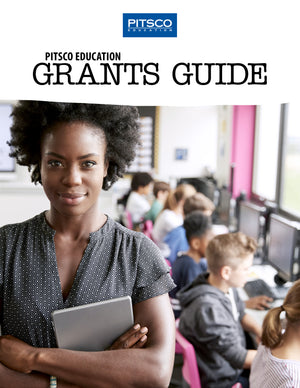STEM Grants and Funding Opportunities for Educators
Paying It Forward: Monthly Grant Opportunities
Each and every month we award educators and student teams with grant funds to help make more hands-on, minds-on, hearts-on learning possible in the classroom and on the competition field.
We Offer Two Monthly Grants
Applications for each are available. You can apply yourself or nominate a deserving colleague. Specific eligibility guidelines and submission details are within the application forms.
Educator Grant
$350 grant, open to preK-college educators
Team Grant
$150 grant, open to K-12 competitive teams

Applying for Funding: Get the Grants How-to Guide
Hunting for grants is a daunting process, especially for a newcomer. Achieving liftoff for your new classroom project really can be 1% inspiration and 99% perspiration. And remember, we've got your back.
Whether you seek to fund a robotics engineering unit, a makerspace within your school's library, a rocketry and aeronautics club, or an Expeditions lab with a focus on regional industries, this guide will give you the footing needed to take the next step toward funding that could make your dream a reality.
 Awarded Vendor Agreements
Awarded Vendor Agreements
"Because of the Pitsco Grant, my students, as well as teachers and students from other parts of Hawaii, have had the opportunity to not only engage in hands-on and minds-on activities that align with the NGSS and the 3Dimensions, but they also were able to take modern easy-to-build and easy-to-use examples or middle ages engineering marvels home to share with family and friends."
– Richard M. Jones, Ed.D., associate professor of Science Education, University of Hawai'i at West O'ahu
